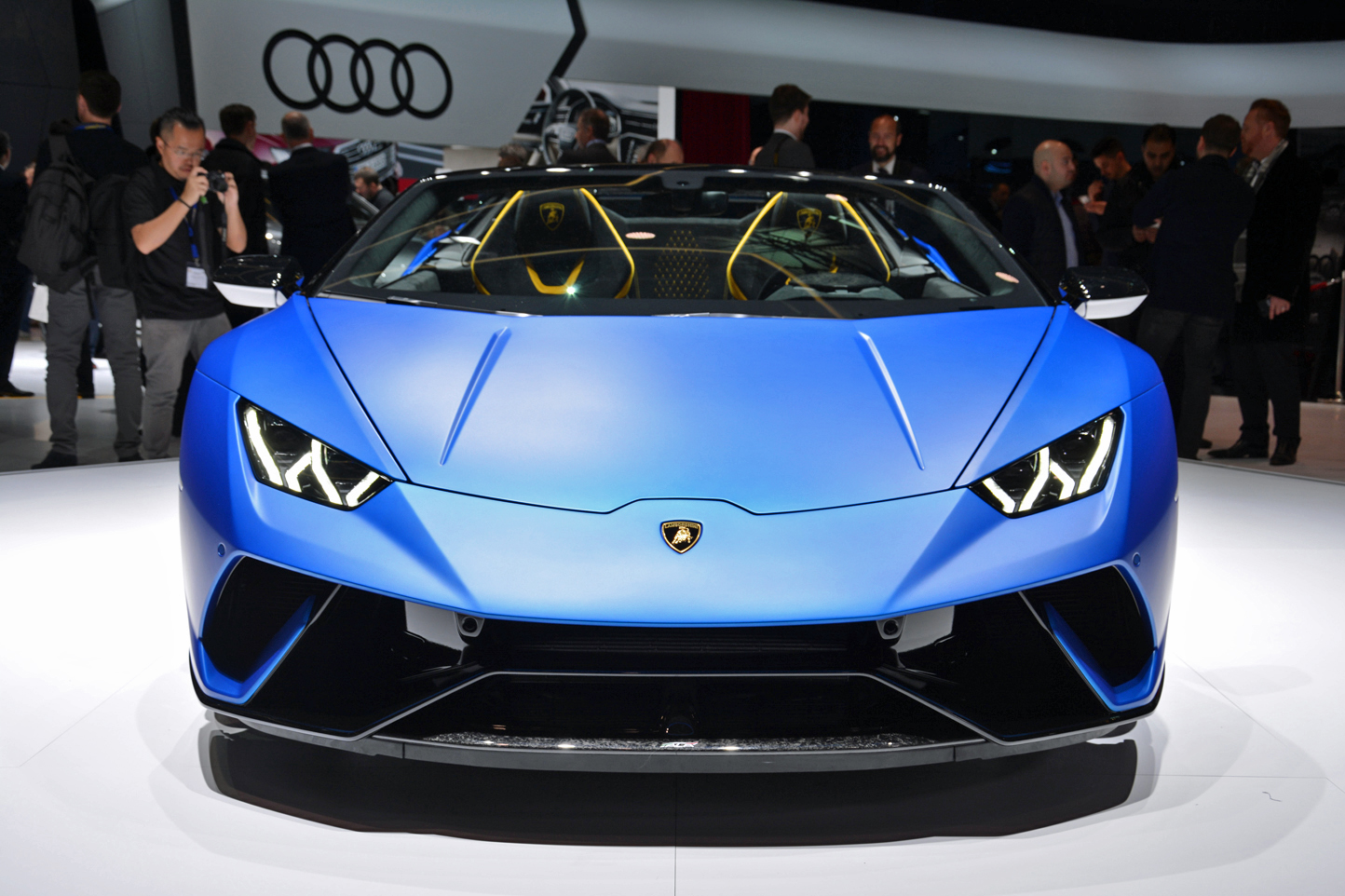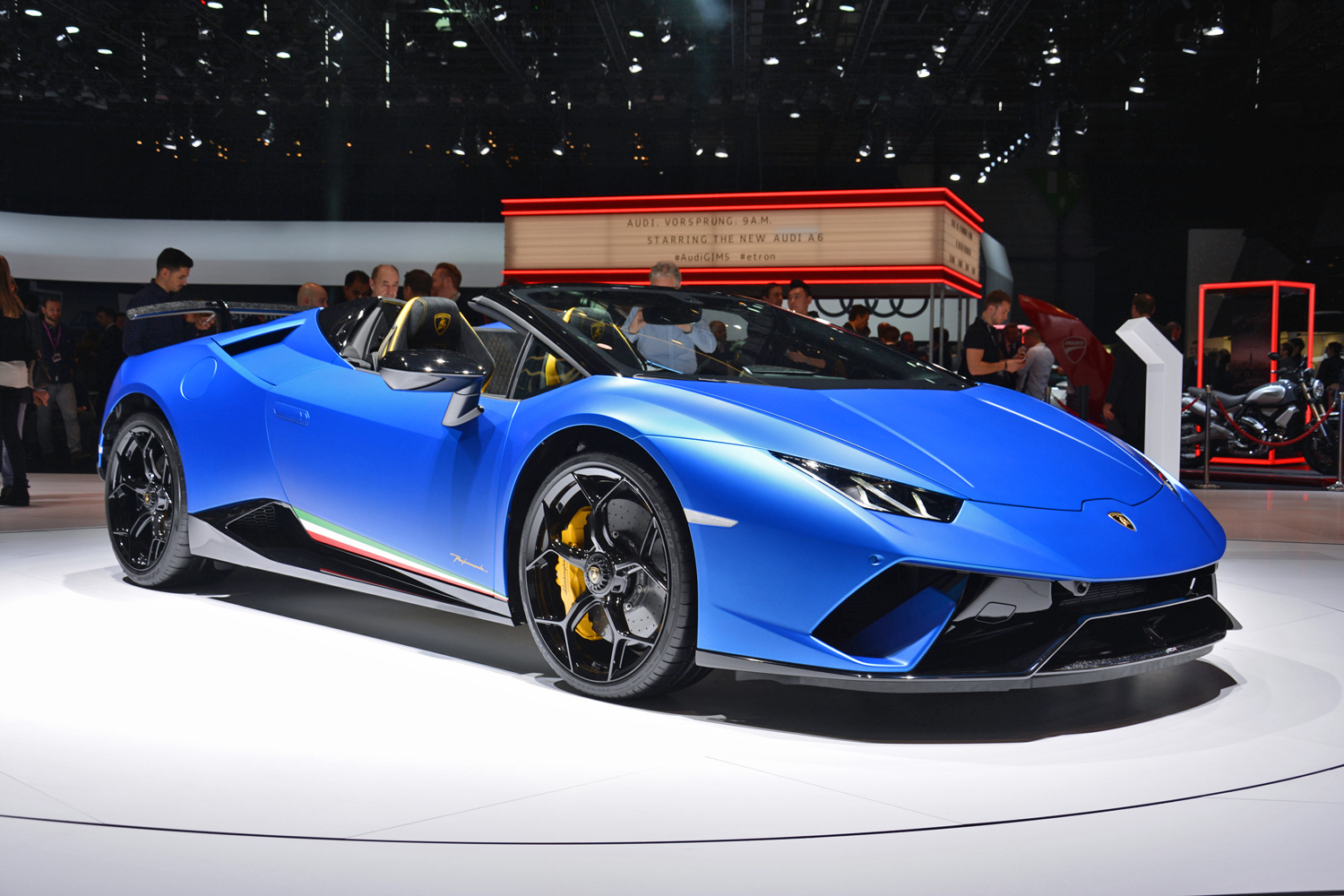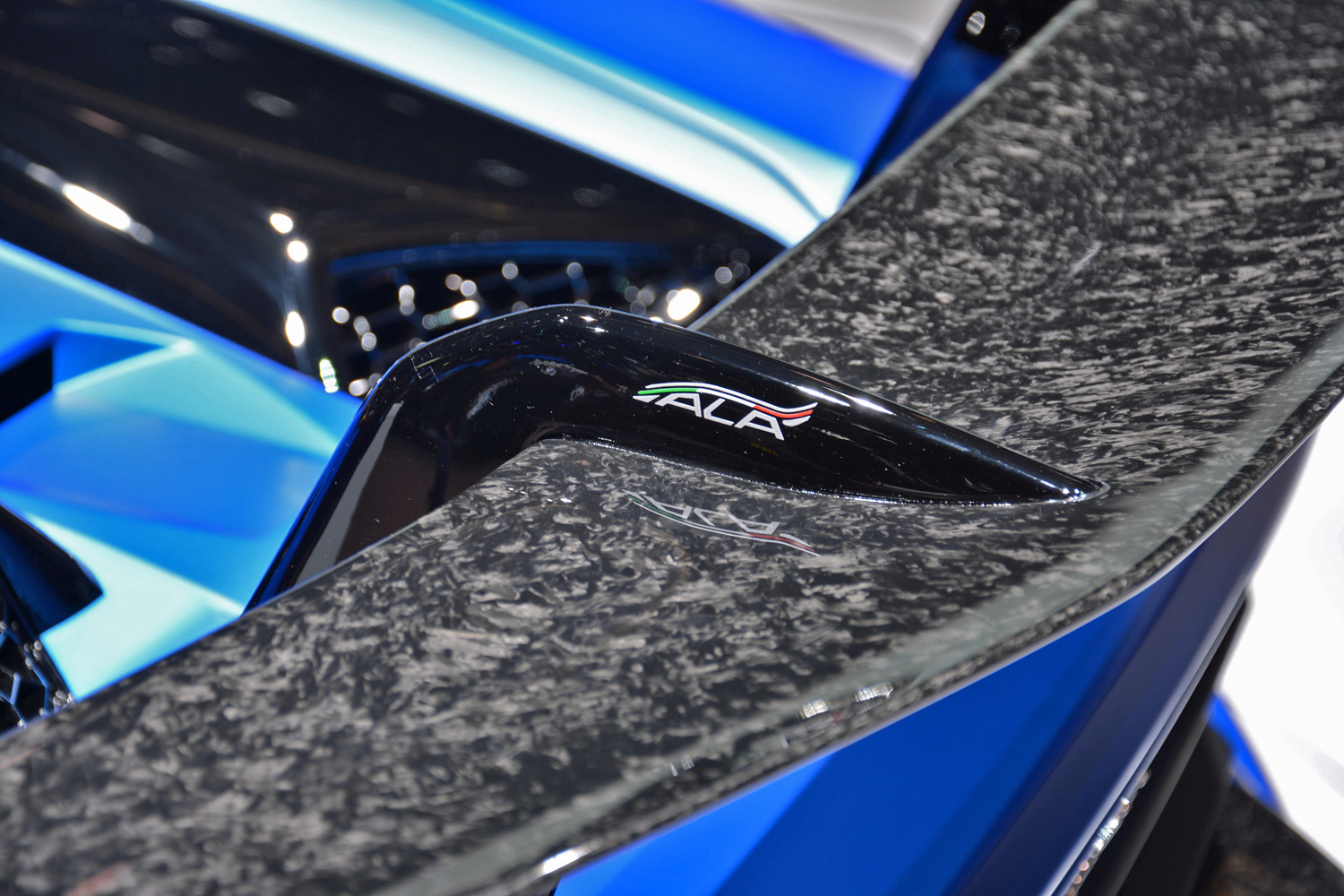Lamborghini kept suspiciously quiet about this year’s edition of the Geneva Auto Show. The Italian firm broke its silence by revealing a topless version of the delightfully hardcore Huracán Performante introduced at the same event last year.
Named Huracán Performante Spyder, the roadster is out to obtain bragging rights. The hardtop model lapped Germany’s famous Nürburgring track in 6:52.01, a time which makes it one of the fastest production cars on the planet. The Porsche 911 GT2 RS recently managed to beat it by clocking 6:47.3. The Spyder won’t trounce either, but we expect it will become the fastest convertible around the 12.8-mile-long track.
How? With raw power, the use of a state-of-the-art material named Forged Composites, and an advanced suite of active aerodynamic features named Aerodinamica Lamborghini Attiva (ALA). It’s the same recipe the company followed to create the hardtop model.
Let’s start with the engine. Like the hardtop, the Spyder receives a naturally aspirated, 5.2-liter V10 that churns out a mighty 640 horsepower at 8,000 rpm and 443 pound-feet of torque at 6,500 rpm. It’s the most powerful 10-cylinder engine Lamborghini has ever built. The list of tweaks includes a bronze manifold, a new intake, and titanium exhaust valves. All that power travels through a seven-speed automatic transmission and a performance-tuned all-wheel drive system before it reaches the asphalt.
You don’t have to look far to find Forged Composites. Billed as a smarter kind of carbon fiber, it’s used to make parts of the front and rear ends, the sizable spoiler out back, the air vents, the door handles, the center consoles, and even the steering wheel-mounted paddles used to shift the seven-speed manually. The Huracán Performante hardtop weighs 88 pounds less than the LP610-4 it’s based on; the Spyder achieves a similar result.
The ALA system automatically adjusts the Huracán’s aerodynamic profile depending on whether it needs more downforce or less drag. Flaps in the rear wing open and close to produce what’s called aero-vectoring. It’s a complicated-sounding term that, simply put, means increasing or reducing the amount of weight that pins down each individual wheel. It helps the Performante get around a track much faster.
The Lamborghini Huracán Performante Spyder will go on sale this summer. Pricing starts at about $309,000.
Updated: Added full information, live photos.












